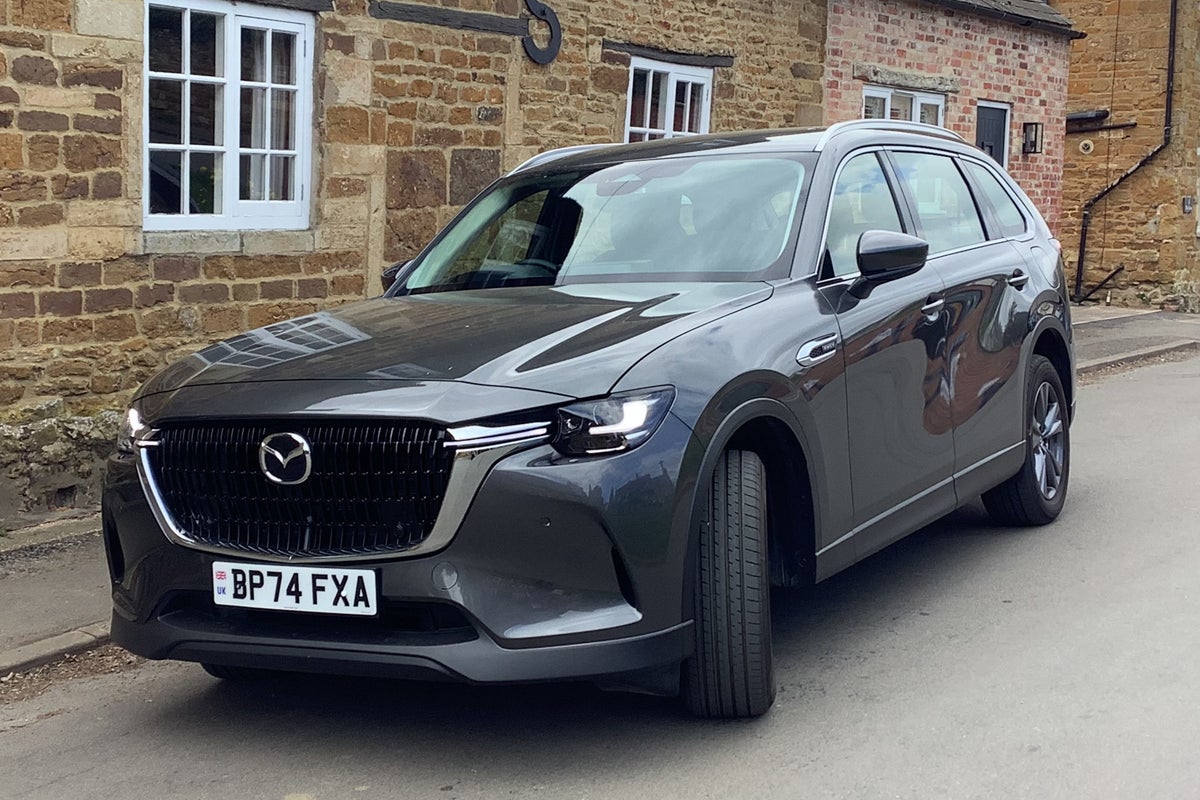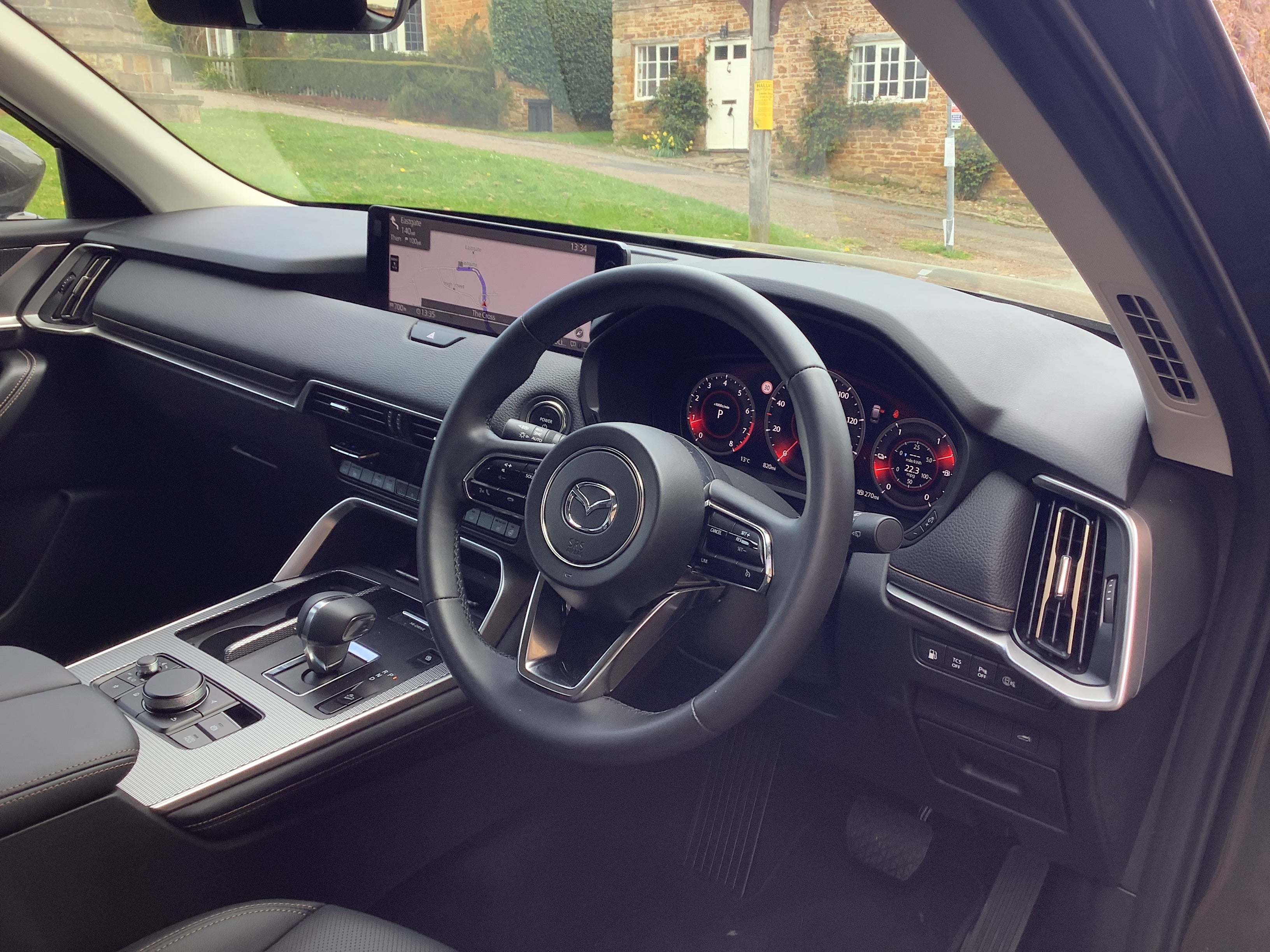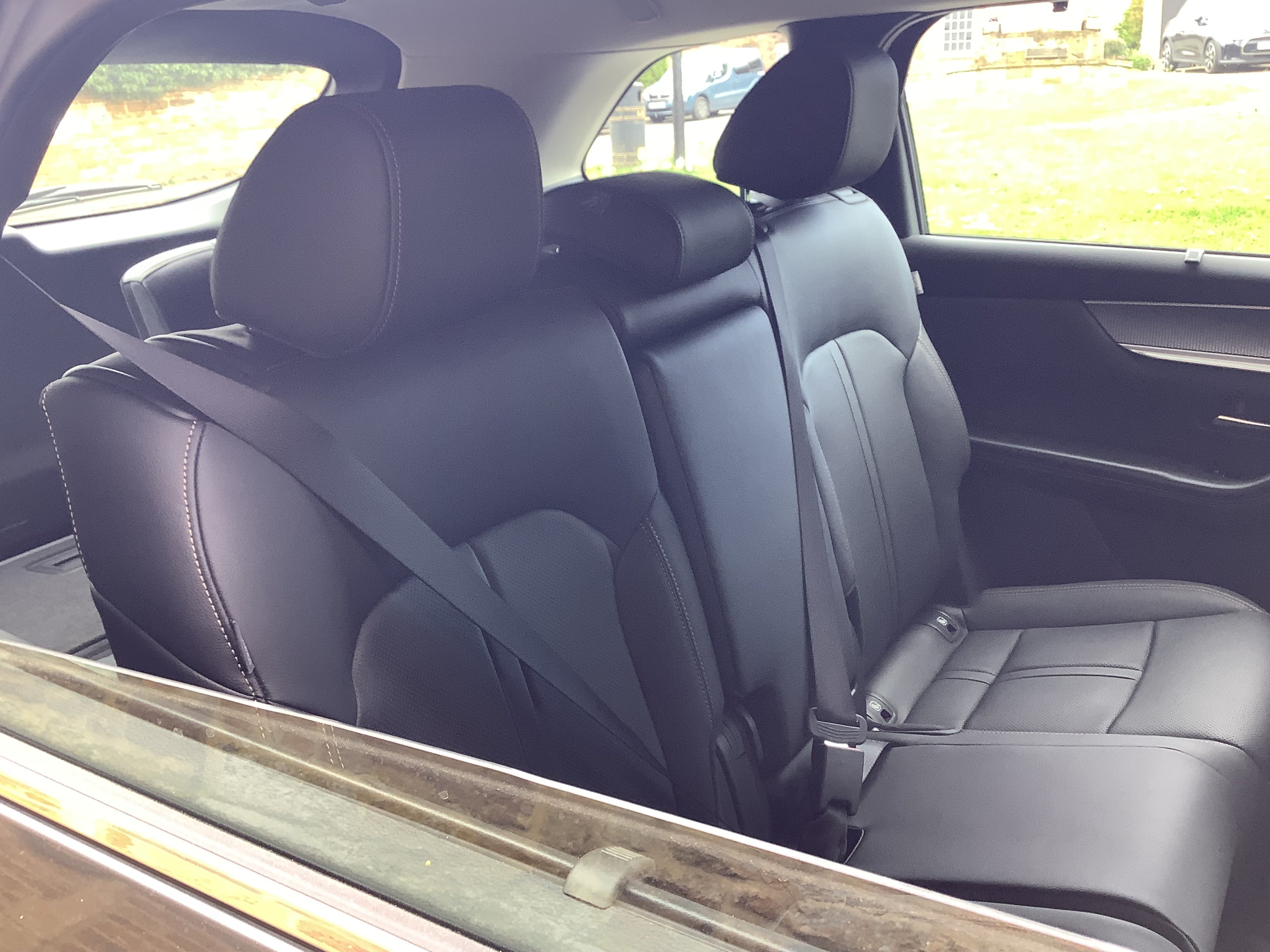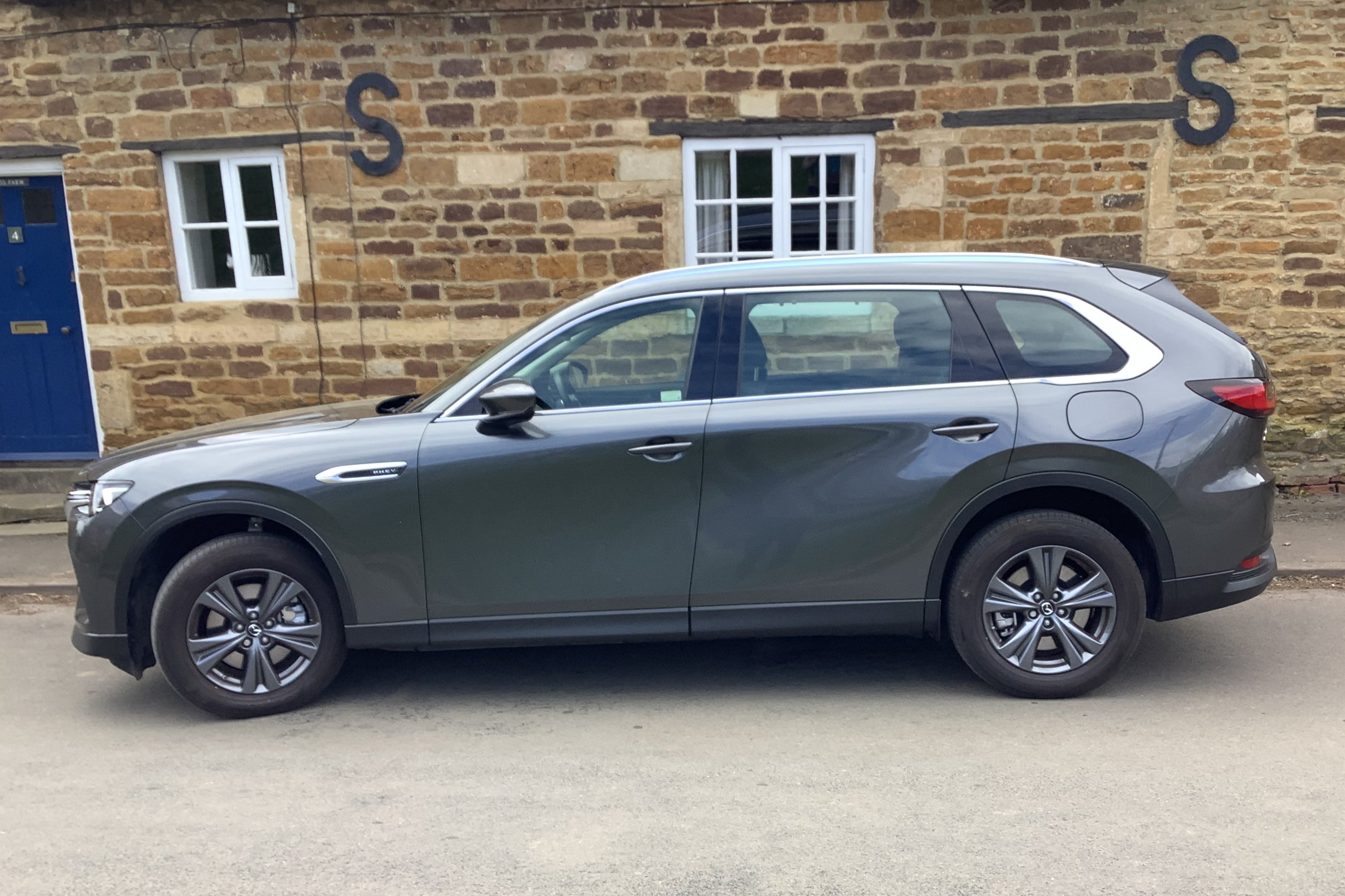
Bus. That’s the word that springs to mind when contemplating the new Mazda CX-80. Inevitably so, given that it’s a full seven-seater, ie for adults, and is a tiny bit longer than a Bentley Flying Spur and an inch, or about three centimetres, shorter than a Range Rover.
Mazda calls the styling “Graceful Toughness”, which is a kind way of saying “slabby”. I can personally attest that the rearmost pair of seats will accommodate a shortish, late-middle-aged male adult with the average acrobatic skills required to access the back end with the middle seats tipped forward. The front seats are capacious and comfortable, and, as you should expect, the whole charabanc feels safer and more solid than any municipal coach you might have been on.

Obviously, as with all such seven-seaters – a niche market in contemporary low-fertility Britain – you can’t have your cake and eat it, so with seven on board, the otherwise generous and versatile boot is reduced to Fiat 500 proportions. A roof box would be the answer for big family excursions. Aside from that, all this Mazda really needs is a conductor to make sure everyone’s happy.
Failing that, there’s the driver, and she or he can have their fun, too. It’s unfair to say that the CX-80 drives likes some old diesel unit, but if the driver selects “standard” mode then progress is satisfactory rather than startling. This is quite simply because it weighs almost three tonnes, even before you’ve added extra human beings, thanks to the petrol/plug-in hybrid set-up, complete with sizeable battery pack (17.8kWh and 177kg) and, in my example, all the extra engineering you need for permanent four-wheel drive.
On the other hand, slotting the Mazda into “sport” mode makes all of its power more readily available, and you can actually hustle the thing around country roads in a way that completely belies its unpromising paper specification – approaching fun, indeed. The penalty is in front of you on the dash: the real-time fuel economy descending to 19mpg. (Unfashionable as it may be, and rare these days, Mazda also offer the option of a meaty and smooth 3.3-litre straight six-cylinder diesel engine, which is of a modern, clean design and probably best suited to load-lugging and that authentic bus-like experience).

As I say, even with such smart engineering, you can’t have your cake and eat it. The idea of the CX-80 as a plug-in hybrid, as with all of these increasingly popular designs, is that you primarily use it for medium-length commutes in electric-only mode (say a total of 30 miles), and rely on cheap, VAT-free, low-tariff overnight charging at home to minimise fuel costs. If you do that, then the Mazda will offer a notional 176.6mpg. If not, and you never bother charging it, you’ll be getting a more ordinary 20 to 35mpg. Given that it’s designed to carry a load, trying to maximise fuel economy should be a priority.
The spec
Mazda CX-80 2.5 AWD Exclusive-Line
Price: £50,530 (as tested; range starts at £49,780)
Engine capacity: 2.5l petrol 4-cyl, 8-sp auto + elec motor
Power output (PS): 327
Top speed (mph): 121
0 to 60 (seconds): 6.8
Fuel economy (mpg): 176 (inc battery-only use)
CO2 emissions (WLTP, g/km): 35
As ever with a Mazda, the cabin is conservatively styled – a bit dark, but well equipped, easy to use and straightforward, and comfy. My only complaint would be the overly smooth leather used on the steering wheel, but that’s just me being a bit fussy. It’s also a bit noisy at speed, to be fair. On the plus side, all the variants get Alexa voice control for music, air conditioning, navigation and third-party apps, a 12.3-inch central display screen, and a windscreen-projected colour head-up display (very good for safety).
Wireless phone charging is included in the optional Convenience and Driver Assistance Pack, and standard on Homura Plus and Takumi Plus trim levels.

In case you were wondering, the CX-80 is only available with all-wheel drive, but you can specify it as a six- rather than a seven-seater, with the middle row being devoted to two passengers’ “captain’s seats”, with either a passageway to hop in the back, or a centre console for a more luxurious air.
Will it suit you and your family? Not so very long ago, before the SUV craze went feverish, there were many “people carriers”, or MPVs (multi-purpose vehicles) on the market. Cars such as the Renault Espace, Citroen Picasso, Seat Alhambra, and Kia Sedona – all people-first ultra-versatile designs. They had wide rear doors, sometimes sliding; easy access; and were much more obviously fit for purpose than an SUV, even a big one.

There was a Mazda model too, the Mazda 5. The CX-80 is a bit more MPV-ish than SUV, but still not purpose-built. Those days are gone, and none of the nominal SUV replacements work as well as the MPVs of recent blessed memory. Shame.
That said, the Mazda’s mainstream rivals include the Hyundai Santa Fe, Kia Sorento, Peugeot 5008, Skoda Kodiaq, Volvo XC-90 and Mercedes-Benz GLB. There are also various Land Rovers at the more premium end of the market, and the cheeky little Dacia Jogger offering unrivalled person-carrying value for money. All are good, but your choice really depends not so much on the spec of the car as the spec of your family/extended family – the ratio of shorthouses, colossally fat, slim, unfeasibly tall, short, little kids, to, let’s face it, arthritic pensioners. It takes all sorts.
The CX-80 wouldn’t be a bad choice for anyone, but the compulsory four-wheel drive set-up does make it best for folk who live in the country, where, as we know, rural bus services have been cut back. But now you can have your own, and live your best life out on the buses. Ding-ding!







